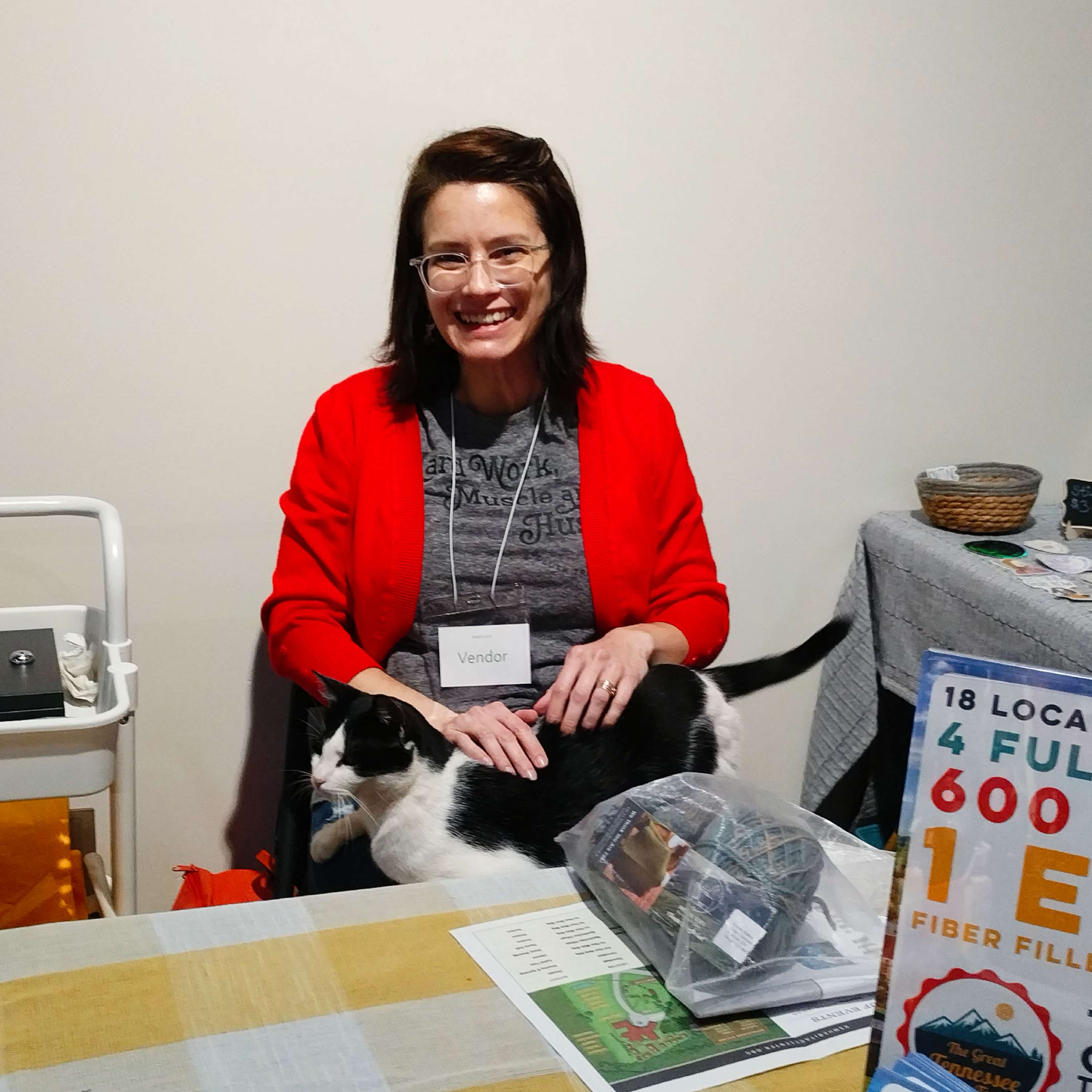The Big Deal about BFL
- Jillian Walther

- Feb 21, 2024
- 4 min read
This weekend is our Trunk Show with Aisling Yarns, affectionately called the "Sock Hop" yarn show because it's ALL sock yarn!
What makes the yarns from Aisling Yarns so special and unique is that Aisling Yarns specializes in Blueface Leicester (BFL) yarn.
At this point, you may be asking yourself: Bluefaced What?
Sidebar: Time to geek out on fiber terms!
Before I get too far into sheep talk, let's learn some vocab! When we're talking wool, there are 2 terms to know: microns and staple length.
Micron refers to the diameter of a single fiber. The lower the number, the finer the fiber. Human hair usually has a diameter of about 100 microns, while the diameter of Merino fibers may range from 10 - 24 microns.
Staple Length refers to the length of an individual fiber. Staple Lengths may range from less than inch to 7" or more!
Now back to sheep
Just like cats and dogs, there are different breeds of sheep, and each breed has its own wool-derful qualities. When you see a sweater or garment that says "Merino," it's not just throwing about fancy words, but telling you what type of sheep that fiber came from. The diameter of Merino fibers may range from 10-24 microns with a staple length of 2-5". Merino is often hailed as the luxury yarn, because any fiber with a diameter of 17.7 microns or less is considered fine. Merino is lauded for its next-to-skin softness and smooth texture.

But all that softness has a slight problem - it can sometimes be too soft. When it comes to socks, Merino has a tendency to wear out, especially in the heels. Because of this, Merino is usually paired with another fiber (e.g. Nylon) to add structure and stability.
Enter: The Bluefaced Leicester

Distinguished by their long, "Roman" profile and blue-grey skin color, the origins of today's Bluefaced Leicester breed can be traced back to the 1700s. At the time, Robert Bakewell started using selective breeding techniques to create an English sheep breed with a dual purpose: it must have wool with a long staple length to be suitable for clothing and it must also produce a good quantity of meat.
Over the next 150 years, Bakewell's breeding techniques took off and the Bluefaced Leicester (as we know it today) developed into its own breed at the end of the 19th century. By the 1960s, BFL sheep were so popular that farmers created a breed society, the Bluefaced Leicester Sheep Breeders' Association.
What makes BFL so special?
With a diameter of 26-30 microns, BFL wool is considered medium-fine, similar to alpaca or mohair. While not as fine as Merino, it is still a luxuriously soft wool great for apparel and accessories. Three other qualities really distinguish BFL among the wool world.
Luster: BFL wool is prized for its softness and luster, but what causes this? Surely, some chemical process, right? Nope! BFL fibers do not have scales on them like other wool breeds. This means, the fibers have a naturally lustrous appearance. Some people might even think the wool has silk in it because it is so shiny!
Long Staple Length: Bluefaced Leicester Wool has a staple length up to 6", making it one of the longest wool fibers available and a dream for spinners. For knitters and crocheters, this long staple length translates to inherent sturdiness and stability. In other words, it does not need to be paired with another material, such as nylon, to make it durable enough for hard-wearing items such as socks.
Crimp: Bluefaced Leicester locks are curly! Do a quick web search to see for yourself! BFL creates a really springy yarn, endowing your garments with great shape memory!
Bluefaced Leicester Sheep are mainly found in Northern England, Wales, and Scotland. While BFL sheep were exported to North America in the 1970s and 80s, this was later restricted. Thus, many of the North American BFL are the result of crossing other breeds, rather than being pure Bluefaced Leicester pedigree. Even though North American farmers are continuing to discover the benefits and beauty of BFL, American BFL wool is typically only about 90% true BFL. For 100% Bluefaced Leicester Wool, the wool must come from Britain.
The Aisling Yarns Way
Aisling Yarns is the work of Christa and her husband, Clyde. Christa has been involved with fiber arts since the 1960s. A trained artist, her hand-dyed yarns are testament to her talent for combining color, design, and method.
Aisling Yarns specializes in 100% British Bluefaced Leicester yarns, sourced England. The sheep are British bred and raised, and the wool is processed and spun in small British mills. Because the wool is fully processed in Britain, it is not submitted to harsh chemical treatments. The resulting yarn has a beautifully balanced twist - you will notice the difference right away in your knitting or crocheting!
I often tell customers I try to feature "Good Yarns that you can feel good about." In a nutshell, here's why you can feel good about the yarns from Aisling Yarns.
100% British Bluefaced Leicester wool from British farmers
Processed in Britain without the harsh chemicals used in other regions
Spun in small British mills - guarantees a balanced twist
Hand-dyed in the USA by a skilled artisan
I hope this information helps you to appreciate the care and consideration that Aisling Yarns puts into every skein. From start to finish, it is truly an exemplary product!
Don't miss your chance to see, touch, and buy BFL yarns in person! Stop by the shop this weekend for the Sock Hop Yarn Show!
Resources
Thank you to the following sites for providing a wealth of information about Bluefaced Leicester!
Roy's Farm: https://www.roysfarm.com/bluefaced-leicester-sheep/
Northwest Yarns & Mercantile: https://nwyarns.com/blogs/northwest-yarns/know-your-fiber-bluefaced-leicester
Eden Cottage Yarns: https://www.edencottageyarns.co.uk/blogs/faqs/fibre-faqs
The Fox and the Knight: https://thefoxandtheknight.com/what-is-blue-faced-leicester-yarn/
Spin Off: https://spinoffmagazine.com/faces-wool-merino-sheep-part-ii/
Laughing Lamb Fibers: https://www.laughinglambfibers.com/blogs/fabulous-fibers-n-such/115466371-wool-grading-systems
YAK. https://yarnandknitting.com/know-your-sheep-the-bluefaced-leceister/
Aisling Yarns: https://www.aislingyarns.com/about




Comments